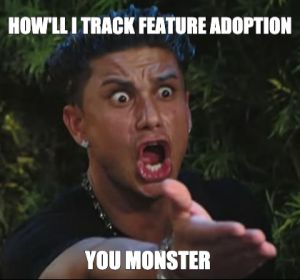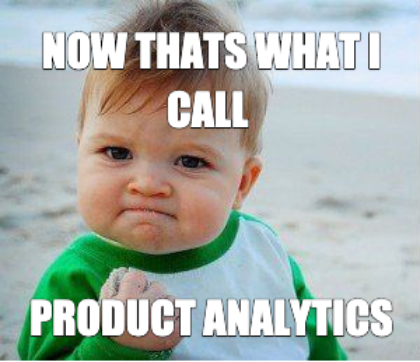

Google Analytics (GA) is the most used website analytics platform in the world. Digital products, like SaaS and E-commerce, use GA for product analytics as well. Is it a good idea? Let’s evaluate.
Managers use product analytics to understand different feature adoptions and what are the friction points. They need to analyze how users are navigating across the application and if they are facing any performance challenges. Product managers use this data to improve the product.
Even customer success teams can use behavioral analytics for different user cohorts to identify the right users for improving the efficiency of their process.
GA (Google Analytics) is primarily for marketing teams to analyze website usage and attribution. Different teams like product manager, customer success teams, account managers, and C-Suite executives, need product analytics to take crucial decisions.

It looks very easy to implement GA at the beginning, just an innocent anchor code in all the pages. For product analytics to work, managers have to carefully define all the Key Performance Indicators (KPIs) of the application in advance. Next they need a coordinated effort with the engineering team and make sure coding is done properly to track KPI events. With 100s of pages and dynamic forms and buttons, this is no easy task. I know many companies investing 2-3 months in the beginning and never revisited this process. In the past year, they released tens of features, now there is no data for these new releases.
Implementation of analytics code in the application gets into a never-ending loop. Every new feature, update or KPI needs engineering coordination.

It’s a myth that GA is free. There is no license fee for the platform, but it takes massive effort to get it rolling. Sometimes you need a whole team to derive value. It adds a massive cost to the adoption.
And with all the hidden costs, does it really get the job done for teams looking for this analytics, NO.

As with many free products, you are using GA on your own and some open community support. For a company using analytics data to drive crucial decisions cannot be blindsided.

Security: Google does not have the best record with data handling. There is no control over how data is stored and for what other purposes it can be used.
Sampling: GA only uses a portion of the data for analytics. Here is what google says about sampling. If you are looking to dig deep into product adoption, you need all the data at each user level.

Most of B2B SaaS softwares like CRM, marketing automation tools, HR management softwares are selling multi-user licenses to companies. It is imperative for these products to understand both user level as well as account level adoption.
This is a hard problem and GA along with many platform fail on this front miserably. Fibotalk has an out of the box solution for this and many are finding unprecedented value with that.

User cohort analytics is very important for SaaS applications to understand how a particular user cohort like trial users is using the product. It gives a fair idea of product adoption and user expectations in different phases of the product life cycle.
GA has a very basic user cohort tool. It cannot produce user lists like “users who have used feature 1 but no feature 2” or “users losing interest”. Only small information about few users is available. Imagine, how you plan to use this information to make crucial product decisions or customer success calls.

Feature adoption analysis is super important for CXOs and product team alike. If you know which features are most used relative to each other, it gives a great insight into how users are perceiving the platform value. This is a significant input for product roadmap or in some cases future strategy.
The list is much longer, but I think you get the idea. It’s not only GA, but other prominent players like mix-panel and amplitude also have similar issues.
At Fibotalk, we are disrupting this status quo

Integration process should not be nightmare. Data collection process should not slow down your application. Keep this in mind we have decoupled implementation from data consumption.
Implement our code only once in your application and never lose analytics data.

Fibo code tracks user activities like clicks and page views by default. It also tracks system performance parameters like page load times, API latency, and failures on user devices and browsers.
With no data ever lost, you can do analytics of past user behavior with every changing KPI or feature release.

Our innovation of track all always and select important anytime creates a very exciting platform for many teams. You don’t have to depend on experts to pull reports. We have simplified the process of report generation with simple KPI definition processes.
Like to track feature adoption, you just need to define the events that make that feature and all the associated reports and user cohorts are automatically generated.
Anybody from CXO to product manager to customer success team to marketing guys can use it.
Google Analytics (GA) is a great tool for website performance analytics, but it falls short for product analytics, especially for SaaS and E-commerce. It requires many resources and expertise to pull off the integration, which adds to massive costs. Not all teams can use GA, as it fails to provide deep insights due to data sampling. Fibotalk has a frictionless integration process and you can go live in minutes. All user activity and application performance dimensions are tracked by default. Creating a report is ridiculously easy on the Fibotalk platform. It makes Fibotalk apt for multiple teams.
